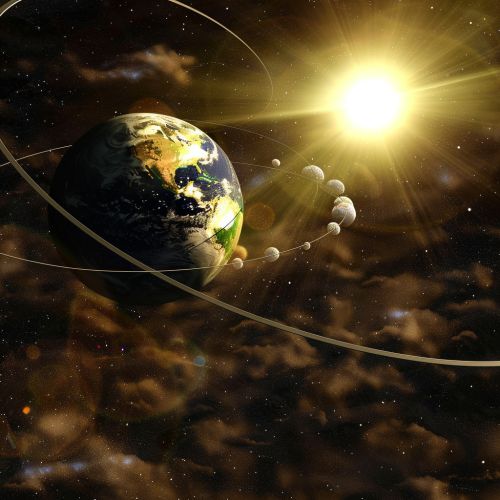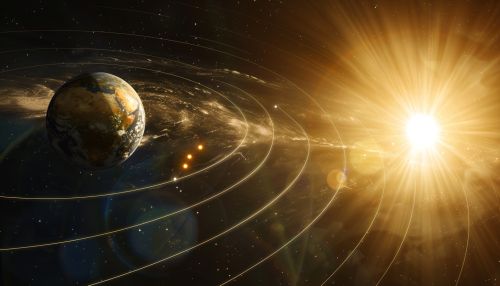Orbital Forcing
Introduction
Orbital forcing refers to the changes in the distribution of solar radiation reaching the Earth due to the gravitational influences of other celestial bodies. This phenomenon is primarily driven by the Milankovitch cycles, named after Serbian geophysicist and astronomer Milutin Milankovitch. These cycles describe the collective effects of changes in the Earth's movements on its climate over thousands of years.


Orbital Parameters
Three primary orbital parameters contribute to orbital forcing: eccentricity, obliquity, and precession.
Eccentricity
Eccentricity refers to the deviation of Earth's orbit from a perfect circle. The Earth's orbital eccentricity varies over a period of about 100,000 years, ranging from nearly 0 (a perfect circle) to 0.06 (a slight ellipse). Higher eccentricity means more variation in solar radiation between the Earth's closest and furthest points from the Sun.
Obliquity
Obliquity, or axial tilt, is the angle between the Earth's rotational axis and its orbital plane. The Earth's obliquity oscillates between 22.1 and 24.5 degrees on a 41,000-year cycle. Greater obliquity results in more pronounced seasonal contrasts.
Precession
Precession refers to the gradual change in the orientation of the Earth's axis of rotation, which completes a cycle approximately every 26,000 years. This 'wobble' affects the timing of the seasons and, when combined with eccentricity, can lead to significant changes in the seasonal distribution of solar radiation.
Impacts on Climate
Orbital forcing plays a significant role in Earth's long-term climate variations, including the initiation and termination of ice ages. Changes in the Earth's orbital parameters alter the distribution and intensity of sunlight, which in turn affects the Earth's climate system.
Ice Ages
The correlation between orbital forcing and the timing of ice ages was first proposed by James Croll in the 19th century and later refined by Milutin Milankovitch in the 20th century. This theory, known as the Milankovitch Theory, suggests that variations in the Earth's orbit are responsible for the cyclical glaciation of the Earth.
Climate Models
Orbital forcing is a critical component in climate models, which are mathematical representations of the interactions between the atmosphere, oceans, land surface, and ice. These models are used to understand past climate and predict future climate.
Criticisms and Limitations
While the Milankovitch Theory has been generally accepted, it does have its critics. Some argue that the theory does not explain all observed climate changes and that other factors, such as greenhouse gas concentrations and volcanic activity, also play significant roles. Additionally, the theory assumes that the Earth's climate responds linearly to changes in solar radiation, which may not always be the case.
